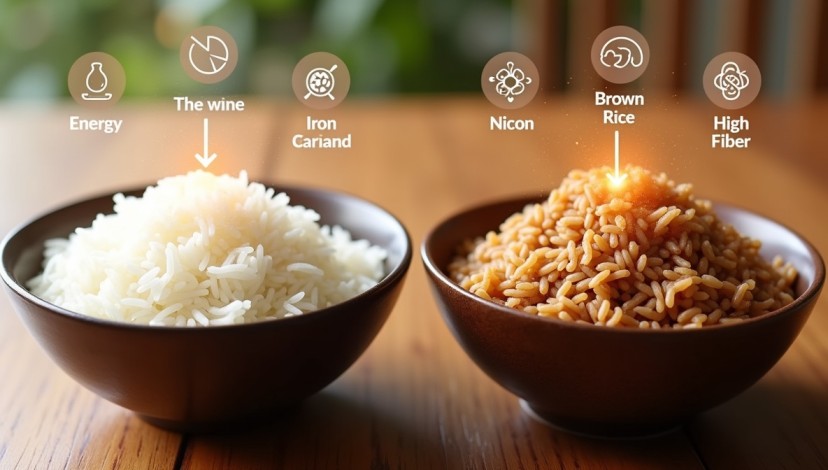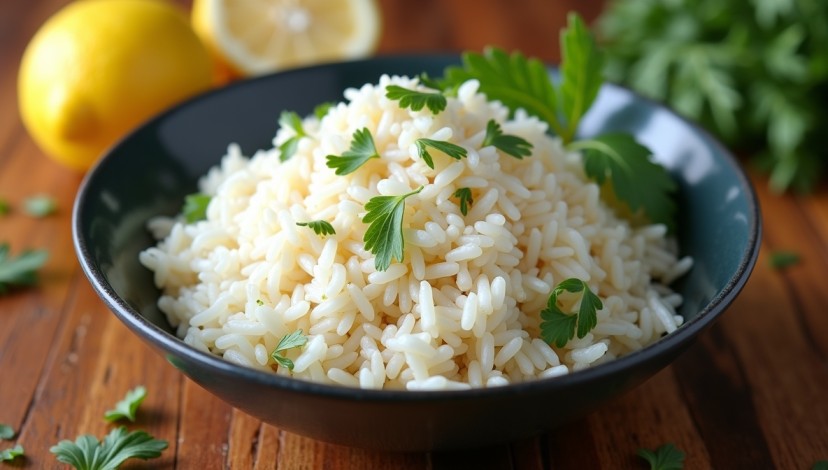Jasmine rice nutrition facts: One cup of cooked white jasmine rice contains about 205 calories, 45g carbohydrates, 4g protein, 0.4g fat, and 0.6g fiber. It has low fats, no gluten, and comes with trace amounts of iron, niacin and thiamine. There is chemically more fiber and nutrients found in Brown jasmine rice.
Jasmine rice, also referred to as Thai fragrant rice, is the common variety of long grain rice, which produces a flowery scent and a bit sticky nature. It is widely used in southeast Asian kitchens particularly Thai food. Disregarding that you eat it with curry, or stir-fry, or just as a side dish, jasmine rice is nutritive, as well as delicious, and fragrant.
So what really is the nutrition facts of jasmine rice? Is it healthy or you should take little? This in-depth guide will deconstruct all you need to know in a way that you can quickly understand so that you will make better choices when it comes to what you eat.
- It is high in carbohydrates and hence a source of energy since jasmine rice is a good source of energy.
- It has a few vital minerals such as niacin and iron.
- Brown jasmine rice is nutritious as compared to the white one.

The first thing that people tend to check in any food label is calories. A white jasmine rice portion size (one cup or an estimated 140g when cooked) has around 205 calories. These calories are mainly of carbohydrates, a little portion of protein, and traces of fat.
A rough outline of calorie count is like this:
| Nutrient | Amount per 1 Cup (140g cooked) |
|---|---|
| Calories | 205 |
| Carbohydrates | 45g |
| Protein | 4g |
| Fat | 0.4g |
| Fiber | 0.6g |
| Sugar | 0g |
Majority of these calories (about 90 percent) are derived out of carbs and that is why jasmine rice is great energy booster. It is fast in the release of energy, so about its use by the athletes or active people.
Nevertheless, you should strike a balance between such calories and your daily consumption. Use portions or eat a balanced plate of rice together with lean meats and vegetable protein when you are in a weight-loss p
Note: Jasmine rice is a gluten free food and this makes it among the recommended rice as far as individuals with gluten intolerance or celiac disease are concerned.
Jasmine rice is a healthy grain which we have to look at both white and brown jasmine rice. Although the two have some health advantages, brown jasmine rice is healthier as it has outer layer of brans, which is rich in fiber.
Having a quick chart, which comparisons them with each other:
| Feature | White Jasmine Rice | Brown Jasmine Rice |
|---|---|---|
| Fiber | Low (0.6g) | High (3.5g) |
| Iron | Moderate | High |
| Vitamin B Complex | Present | Higher |
| Glycemic Index | High | Moderate |
| Antioxidants | Low | Higher |
White jasmine rice is polished and milled, thus almost all the fiber and nutrition goes away. This causes it to be softer and fast to cook though less nutritious. On the contrary, the brown jasmine rice preserves more nutrients, and is friendlier on digestion, and regulation of blood sugar.
With that said, white jasmine rice is not bad, you just must eat it in small portions and combine it with foods rich in nutrients. Brown jasmine rice is healthier to consume especially when you are keeping watch on your weight or controlling blood sugar.
Reminder: Rice must be rinsed well and not over-washed which washes away the water-soluble vitamins.
Jasmine rice may not be a great source of vitamins but it contains some important nutrients as well. Let us have a detailed discussion of the important micronutrients found in jasmine rice:
- Iron- this is useful in the production of red blood cells. A ACupB of jasmine rice will give you nearly 11 percent of your daily iron requirements.
- Niacin (Vitamin B3) aids in the transformation of food into energy and the well being of the skin and the nerves.
- Thiamine (Vitamin B1) -Vitamin that is important to the brain and the nerves.
- Magnesium- Assists in the functioning of the muscles and the nerves.
- Manganese- Promotes metabolism and bones.
These vitamins and minerals are more deposited in brown jasmine rice than they are in white jasmine rice due to the preservation of the bran layer. These minerals help in energy generation, oxygen transportation and also in repairing of cells.
As an example, vegans can be lacking iron or B-vitamins. Brown jasmine rice can be added to their food to address that nutritional shortage.
The glycemic index of jasmine rice varies prior to preparation and ranges between medium to high. White jasmine rice has a GI about 6880 whereas brown jasmine rice is 5060.
So what does that mean? The faster a food increases your blood sugar the higher the GI. Thus, the white jasmine rice may result in a sudden rise of sugar in the blood and this is not very good news to those with diabetes or with insulin sensitivity.
This is how it matches up against other rice varieties that are popular:
| Type of Rice | Glycemic Index (GI) |
|---|---|
| White Jasmine Rice | 68–80 |
| Brown Jasmine Rice | 50–60 |
| Basmati Rice | 50–58 |
| Sushi Rice | 70+ |
In order to regulate spikes of blood sugar:
- Combine jasmine rice with fiber rich vegetables.
- Add good oils such as Avocado or olive.
- To slow down absorptions, add protein such as chicken, tofu, or legumes.
This moderate diet assists in stabilizing your sugar levels and also sustaining hunger.
Although jasmine rice has a high number of carbohydrates, it can form an important component of the healthy, balanced diet. It is all in the way of preparing it and with what you serve it.
The following are some sensible suggestions and food ideas:
- Employ brown jasmine in Buddha bowls with the use of beans and greens and grilled vegetables.
- Prepare stir-fried rice dishes using jasmine rice, and lean chicken along with colorful peppers.
- Consider jasmine rice to prepare your home-made rice salads (cucumbers, tomatoes and olive oil dressing).
- Do not use oil and butter to fry or too much rice.
- Minimize the use of sugary or creamy sauce which adds up calories.
When rice is eaten in combination with good fats and protein, it will slow down the digestiveness rate, give a better nutriment absorption, and make us stay full longer.
Let us take this simple example of brown jasmine rice with grilled salmon and broccoli is much more healthy compared to plain white jasmine rice.
Tip: One serving of jasmine rice when cooked should be one cup. When keeping tabs on your weight, avoid second servings.
In conclusion, jasmine rice is not only about the taste and the impressive smell but it has a nutritional value which can form the base of a healthy diet upon being consumed with care. Your dietary preferences or needs and goals will determine whether you use white or brown jasmine rice.
White jasmine rice provides quick energy; hence, it is good among the sports actors or those who are physically active. Brown jasmine rice, on the contrary, will suit better as far as one needs more fiber, more vitamins and it will regulate blood sugar level.
It is not about getting rice off your diet but how to use it with moderation. Its best consumption is in combination with vegetables, proteins, and healthy fats as a complete meal.
1. Is Jasmine Rice Healthier than white Rice?
Brown jasmine rice has more fiber and micronutrients than regular white rice and hence is healthier. White jasmine rice however is nutritionally similar to regular white rice.
2. Is Jasmine Rice Suitable to Diabetics?
Yes, but not excessively. Brown jasmine rice is preferable because it has lower glycemic index and rich in fiber, which maintains blood sugar levels.
3. Does Jasmine Rice aid in Weight loss?
Jasmine rice contains many carbohydrates and it is not necessarily a low-fat food. Nevertheless, an appropriate administration of portions, combination in protein, and fiber can facilitate weight control.
4. Does Jasmine rice aid in Digestion?
Brown jasmine rice promotes digestion because of its richness in fiber. White jasmine rice is not very fibrous and of less complexity to digest, especially by persons with sensitive stomachs.
5. How to Cook Jasmine Rice to Get Nutritional Advantage?
It is imperative to rinse it, then cook using a rice cooker or steam, and not to overcook it. Complete it with vegetables or low-fat meat products to make it a complete dish.

